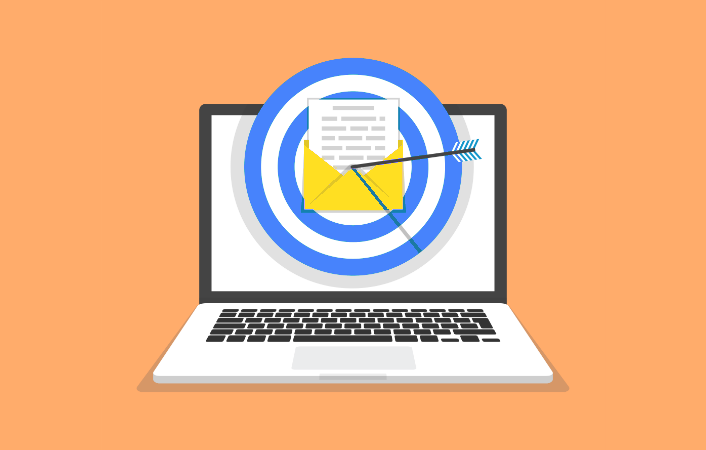An Analysis On Email Blacklists & How You Can Avoid Them For A Successful Email Marketing Campaign
A product or service that is new to the market, or is already having a significant brand value, needs to reach out to consumers. However, organizations find it challenging to work on the popularity of the brand if the mail does not reach the intended recipient and enters an email blacklist. More often than not, essential emails directly reach spam folders and hardly get noticed by the recipient. Hence, an organization must take steps for their important emails not to get blacklisted by the server.
A Few Common Reasons Behind Blacklisted Emails
When expecting a new email in the mailbox, email service providers carry out filtering in respect of tagging and flagging. This spam-flagging could be a result of interpreting the email as spam by delivering or already delivered entities. It causes the email to land in a spam folder, or even create a bouncing back to the sender as decided by the ISP.
Here are a few cases where organizations face email blacklist:
- Product updates and offers.
- Welcome mail to a service.
- News agency updates.
- Bank updates on FD/credit cards.
- Social messages broadcast from organizations.
- Payment confirmation emails.
- Account renewal acknowledgement emails.
Blacklist Domain – Complete Showstopper For Your email Deliverability
As part of their cybersecurity infrastructure, recipients can have several layers of filters available for incoming emails. Organizations sending frequent emails in bulk using smtp mail server might face marking and filtering on the domain layer also. So after changing the sender email id, which is already blacklisted by several recipient entities, the email can still land in the blacklist as the domain is facing spam tagging. Because deliverability is a crucial concern for most email marketers, the blacklist domain can seriously harm the reputation of the organization.
There are specific tools available to analyze and remove domain status for blacklisting. However, it is the responsibility of the organization to keep a good domain reputation to maintain the email deliverability.
Steps To Check If Your IP Is On Email Domain Blacklists
Having a history of sending spams can cause mail server administrators to block certain domains. Here are steps to check if you are on the blacklist domain:
- Check a blacklisted site directly: You can check the blacklisted website to see if they are blocking the IP address or domain. There are a few websites available that make these blacklists openly available. You can check the blacklist status of any server by just entering its domain or address.
- Use a dedicated blacklist tool: If you can’t ascertain whether you are on a blacklist through open blacklist sites, there are also online tools available that you can use to check the IP address and domain blacklists. They check your domain against DNS based email blacklists.
- Check your metrics: If the email opening rates are going from 30% to 5%, you know something is amiss. It could be failed authentication, blacklisting, or other issues.
- Send test emails: Send test emails to a list of known email addresses. It will enable you to check how many of them get delivered and whether they end up moving to the spam folder.
Reducing The Risk Of Getting On A Spam Blacklist
SPF, DKIM, and DMARC are few techniques to ensure deliverability and avoid landing in an email blacklist of the receiver. These proven protocols are used by the ISP and email servers/proxy to analyze and track down a valid list of senders.
- Sender Policy Framework or SPF is a protocol that analyses the deliverability to the senders. It is enlisting the IP addresses the sender is allowed to send and adding them to DNS.
- Domain Keys Identified Mail or DKIM is used to check if the email was sent and authorized for the recipient’s domain. DKIM uses signature match techniques, which enable the decision-making process. If there is a modification or forgery in the mail content, there is a failure in check, and delivery to the recipient gets blocked. Mail Transfer Agent incorporates the DKIM signature with hashing algorithms.
- To have a protective layer in addition to SPF and DKIM, DMARC is a protocol used to enhance the ability to stop malicious emails, Ransomware threats, brand misuse, and phishing on proprietary information for organizations.
- DMARC reports show the status of the sender domains and crosscheck in detail which part of the email got spoofed before the attempt of delivery and why it was blacklisted. So if the SPF check or DKIM check fails, there is a proper stage by stage analysis of the failure.
- DMARC policy enables the ISP to reduce guesswork on delivery failures, as the analysis and reports are primarily dependable and hint on the solution to get past the possible issues. It also helps in improving relations between email marketers and the ISP.
Responsive Design Is The Key To Avoid Email Spam Lists
Providing relevant and useful email experience for your customers will ensure you do not enter an email blacklist. If the user engages with your email, there are fewer chances he/she will report you as spam. Hence, design for engagement is the best way to avoid email spam lists.
- Sell the value of your email through a personalized subject line.
- To emphasize your CTA, use an inverted pyramid design.
- Think mobile-first in your design.
So, If you are not getting the expected response from your email campaign, chances are that your smtp server or email has entered a blacklist. While it may be extremely annoying to have the carefully crafted emails rejected before they even reach your subscribers, blacklists are quite helpful. Nearly 85% of emails sent daily are spam, and hence, email blacklists exist to keep a considerable amount of malicious messages out of people’s inboxes.







